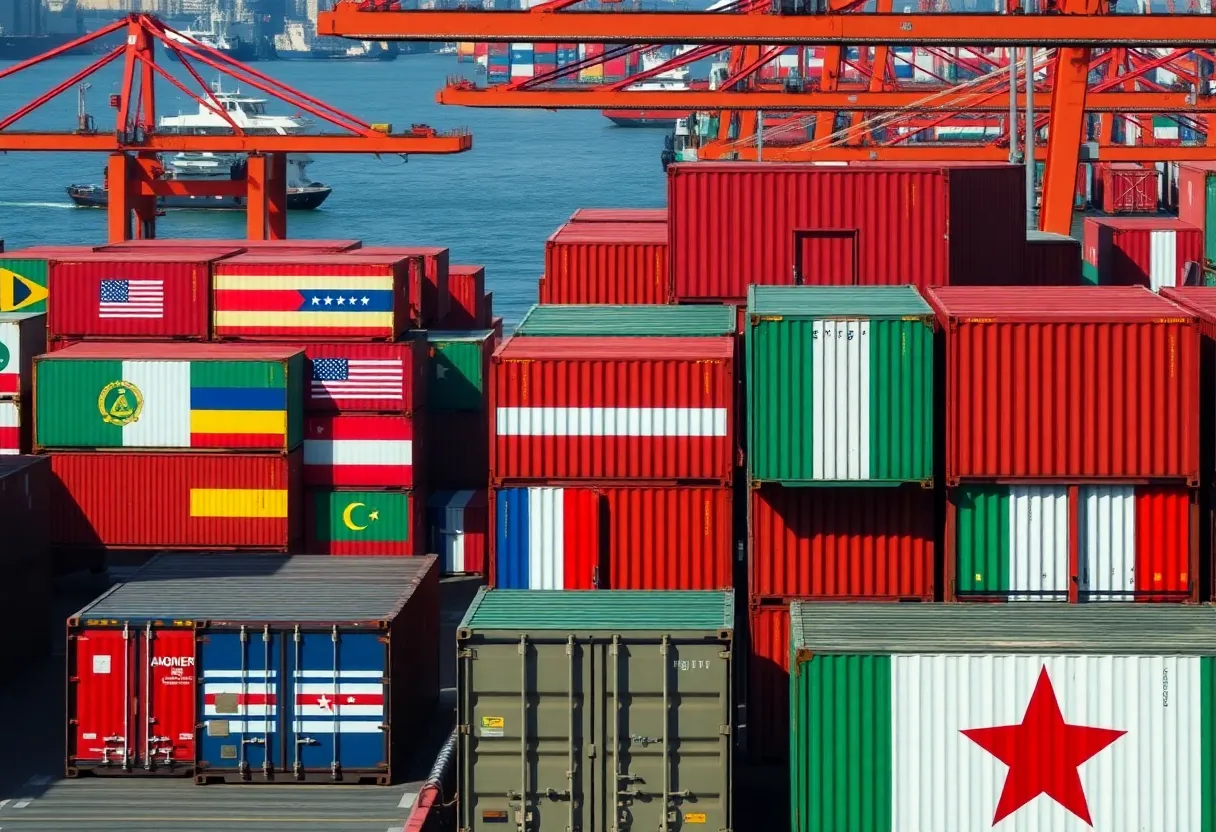News Summary
President Trump has announced a 10% tariff on Chinese imports starting February 1st, linking it to the U.S. fentanyl crisis. This move, following a previous announcement of a 25% tariff on Canada and Mexico, escalates ongoing trade tensions. Economists warn of potential economic implications including inflation and slowed growth, while businesses express concern over potential price hikes. As the administration aims to tackle trade deficits, the situation promises to impact American consumers significantly.
Trump’s New Tariff Battle Begins as Part of Fentanyl Fight
In a bold move that’s sure to stir up the pot, President Trump has declared plans to slap a 10% tariff on imports from China starting February 1st. This is not just a casual trade tweak; it’s a direct reaction to concerns surrounding the ongoing fentanyl crisis plaguing the United States. It seems the administration is drawing a connection between shortfalls in U.S. health and the trade practices of our overseas partners.
What’s Behind the New Tariff?
Trump’s accusations against China are significant. He claims that the nation is facilitating the flow of fentanyl into the U.S. by first shipping it to Canada and Mexico, from where it eventually makes its way into American neighborhoods. This latest tariff announcement comes just one day after Trump revealed plans for a 25% tariff on imports from Canada and Mexico as well, which he links to issues of fentanyl and illegal immigration.
What About Previous Tariffs?
This new tariff won’t come in isolation. It’s added on top of already existing tariffs that cover over $300 billion in Chinese goods, which were imposed during Trump’s previous term. It’s clear that the President is not shy about utilizing tariffs as a tool to renegotiate what he sees as unfair trade practices.
The Ongoing Trade Tension and Its Implications
After Trump’s recent announcements, China’s government response was swift. Officials indicated they would “safeguard” their interests, hinting at possible consequences if a full-scale trade war unfolds. Analysts are raising alarms that these escalating tariffs could lead China to retaliate against American industries, making it a potentially tricky situation for the U.S. economy.
Consumer Impacts and Economic Concerns
Economists are sounding the alarm over the risk of a global trade war. Their concerns center on the potential for rising inflation and a slowdown in U.S. economic growth. A tariff-induced increase in costs for American consumers could be on the horizon, sparking worries about the everyday wallet impacts of Trump’s latest moves.
Historical Context of Tariffs and Trade
Looking back, Trump has a history of using tariffs in negotiations, even threatening tariffs as high as 60% on Chinese goods during his earlier campaigns. Interestingly, while these strong measures have been announced, reports show that Chinese exports to the U.S. saw a notable rise of 4% year over year in November 2024, demonstrating a complex trade relationship that continues to evolve.
Is This Part of a Bigger Strategy?
The Trump administration is painting this new tariff proposal as part of a grander strategy to tackle a staggering trade deficit that stands at a whopping $1.9 trillion. They’re also taking steps to dig deeper into the causes behind these trade deficits, suggesting we might see some restructuring of existing trade agreements in the near future.
Pushback from Businesses on the Horizon
However, it’s not all smooth sailing. The business community is already starting to express concerns regarding these new tariffs. Many are worried about how they could trigger price hikes, which might ultimately lead to tighter consumer spending and delays in economic recovery efforts.
In conclusion, President Trump’s newly announced tariffs are set to shake things up in the trade landscape, especially in light of his ongoing battle against fentanyl crisis. As the situation develops, it will be interesting to see how these tariffs affect everyday Americans and the economy at large. Buckle up because it looks like we might be in for a bumpy ride ahead!
Deeper Dive: News & Info About This Topic
- The New York Times: Trump’s Tariff Battle with China
- Wikipedia: Tariffs in the United States
- Bloomberg: Trump and Targeted Tariffs
- Google Search: Trump tariffs
- Reuters: Trump’s 10% Tariff on China
- Encyclopedia Britannica: Tariff
- CNN: Trump’s New Tariff Announcement
- Google News: Trump tariff China
}

Author: HERE Greenwood
The GREENWOOD STAFF WRITER represents the experienced team at HEREGreenwood.com, your go-to source for actionable local news and information in Greenwood, Greenwood County, and beyond. Specializing in "news you can use," we cover essential topics like product reviews for personal and business needs, local business directories, politics, real estate trends, neighborhood insights, and state news affecting the area—with deep expertise drawn from years of dedicated reporting and strong community input, including local press releases and business updates. We deliver top reporting on high-value events such as the Festival of Flowers, Greenwood Community Theatre performances, and agricultural showcases at the Greenwood County Fairgrounds. Our coverage extends to key organizations like the Greenwood Chamber of Commerce and the Greater Greenwood United Ministry, plus leading businesses in manufacturing and healthcare that power the local economy such as FujiFilm Manufacturing and Self Regional Healthcare. As part of the broader HERE network, including HERECharleston.com, HEREColumbia.com, HEREGreenville.com, and HEREHiltonHead.com, we provide comprehensive, credible insights into South Carolina's dynamic landscape.





